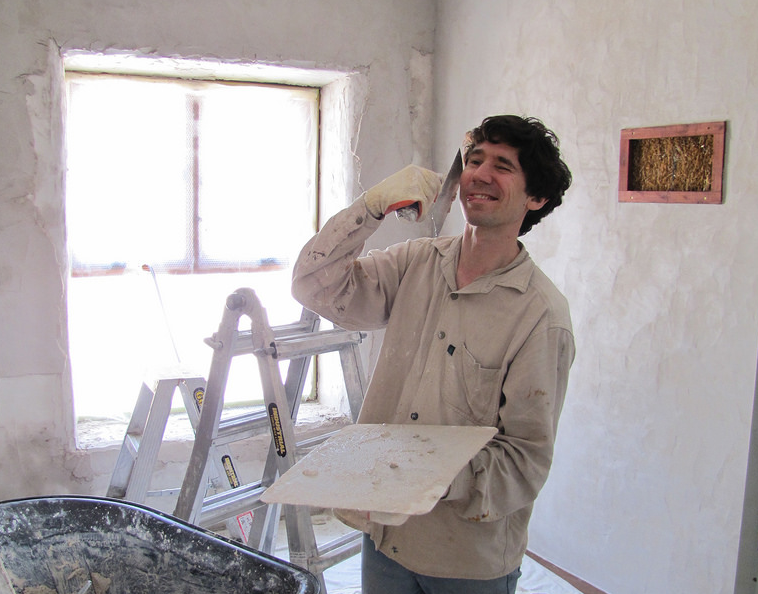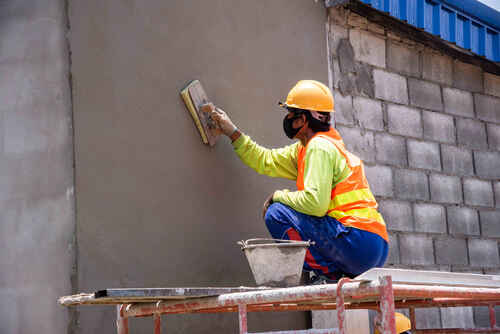Plastering Solutions for Smooth Walls: A Comprehensive Guide
Plastering Solutions for Smooth Walls: A Comprehensive Guide
Blog Article
Key Tips and Devices for Effective Plastering in Your Home Improvement Ventures
Accomplishing a flawless plaster surface in your home enhancement projects calls for a mix of the right devices and proven techniques. Vital executes such as the hawk and trowel are crucial for efficient application, while appropriate surface area prep work lays the foundation for success. Additionally, comprehending the nuances of blending plaster and using it in thin layers can significantly influence the final result. As we check out these fundamental aspects, it becomes obvious that avoiding typical challenges can boost your plastering skills-- ensuring your next task not only meets yet exceeds assumptions.
Crucial Gluing Devices
A plasterer's toolkit is basic to accomplishing a resilient and smooth finish on wall surfaces and ceilings. The important tools encompass a range of carries out created to facilitate the plastering process successfully and successfully. Secret parts consist of a hawk, which is a level, square device made use of to hold the plaster while applying it to surfaces. This device permits for simple transport and application of the product.

Furthermore, a mixing bucket is necessary for preparing plaster, guaranteeing the best consistency prior to application. A smudging brush or sponge is valuable for smoothing and finishing touches out structures. Last but not least, safety and security devices such as masks and gloves should be consisted of to shield the individual from dust and chemicals. With each other, these necessary plastering devices make it possible for both experts and do it yourself enthusiasts to achieve top quality lead to their gluing tasks.
Surface Prep Work Methods
Effectively preparing the surface before plastering is critical for ensuring attachment and attaining a remarkable finish. The initial step includes cleaning the surface area to remove any kind of dust, oil, or old paint that might prevent the plaster's ability to bond properly. An extensive wash with an appropriate cleansing solution is advised, complied with by enabling the surface and washing to dry completely.
Following, examine the surface area for any kind of flaws or splits. These ought to be loaded with a suitable filler substance and permitted to heal according to the manufacturer's directions. For permeable surface areas, using a primer is important to develop an uniform structure and improve adhesion.
Additionally, it is essential to make certain that official website the surface is secure and structurally audio. Any kind of loose materials, such as flaking paint or damaged drywall, must be fixed or removed. Think about using a scrape layer to improve grasp. if functioning with stonework surfaces.
Mixing Plaster Like a Pro

Utilizing a clean blending container, pour the water initially, then progressively add the plaster powder while stirring continuously. This approach aids to prevent clumping and makes certain an even distribution of materials.
When mixed, permit the plaster to relax for a couple of minutes to allow the plaster crystals to hydrate completely. This relaxing period improves workability and minimizes the risk of fracturing throughout application. By following these steps, you can blend plaster like a professional, setting the structure for an effective smudging job in your home renovation undertakings.
Application Approaches for Smooth Finishes
With the plaster mix prepared to the excellent uniformity, the following step involves picking ideal application techniques to accomplish a smooth surface. This tool enables for a penalty, even circulation of plaster throughout the surface area while decreasing trowel marks.
Begin by using a generous amount of recommended you read plaster to the surface making use of the trowel, guaranteeing it sticks well. As soon as the first layer is used, make use of a sweeping motion to smooth the surface area, using even pressure.
For the last touches, a damp sponge can be utilized to fine-tune the surface area further. Gently haze the plaster with water and delicately scrub the surface to attain a polished result. Always remember to operate in little sections to preserve control over the application procedure, making sure a smooth, specialist surface throughout your plastering task.
Common Mistakes to Prevent
When getting started on a smudging task, staying clear of typical errors is essential for achieving a flawless coating. Ensure that all dirt, oil, and loosened materials are gotten rid of prior to applying plaster.
An additional usual mistake is applying plaster too thickly. Thick layers can crack as they dry, compromising the stability of the coating. Instead, choose several thin layers, enabling each coat to dry totally before applying the following.
In addition, bad mixing methods can cause irregular structure and workability. Always adhere to the manufacturer's guidelines for blending proportions and thoroughly blend the plaster to accomplish an uniform uniformity.

Timing additionally plays a critical function; plaster needs to be applied while the substrate is moist to boost attachment. Top notch trowels and floats can make a significant distinction in achieving a smooth coating.
Final Thought
Effective smudging calls for a comprehensive understanding of vital tools and techniques. Proficiency of these elements not only adds to the aesthetic charm of a room however likewise ensures sturdiness and longevity in gluing jobs, making them integral to effective home improvement ventures.
A float is see here one more vital tool, which helps in leveling the plaster and achieving an uniform surface area.

By following these actions, you can blend plaster like a pro, establishing the structure for an effective smudging task in your home renovation ventures.
Gently haze the plaster with water and delicately scrub the surface to achieve a refined impact.
Report this page